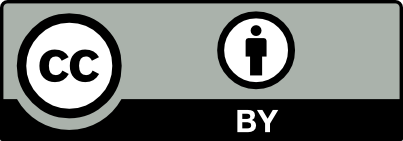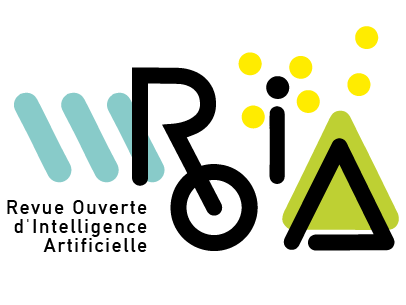Chaque jour, les chercheurs en sciences humaines et sociales (SHS) se trouvent confrontés à l’analyse d’une quantité importante de ressources textuelles. Les outils de recherche traditionnels axés sur des recherches lexicales et quantitatives ne répondent pas toujours aux besoins spécifiques des historiens et philologues. Dans cet article, nous présentons les méthodes, outils et services mis en place dans le cadre du projet HisINum pour répondre à cette problématique. Notre objectif est de proposer un processus générique et réutilisable pour l’analyse de textes anciens, l’indexation sémantique sous forme de graphe de connaissance des différents textes étudiés et la mise en place d’un service de recherche et de visualisation exploitant ces graphes générés.
Every day, researchers in the humanities and social sciences (SHS) are tasked with analyzing vast quantities of textual resources. Traditional lexical and quantitative research tools do not always meet the specific needs of historians and philologists. This article presents the methods, tools and services developed as part of the HisINum project to address this issue. We aim to provide a generic and reusable process for analysing ancient texts, the semantic indexing in the form of knowledge graphs of the various texts studied, and the implementation of a search and visualization service exploiting these generated graphs.
Keywords: knowledge Graphs, Ontologies, Linked Data and Vocabularies, Semantic Annotation of Greek and Latin Texts, History of Zoology
Molka Dhouib 1 ; Arnaud Barbe 1 ; Catherine Faron 1 ; Arnaud Zucker 1 ; Marco Corneli 1
 CC-BY 4.0
CC-BY 4.0
@article{ROIA_2025__6_1-2_85_0,
author = {Molka Dhouib and Arnaud Barbe and Catherine Faron and Arnaud Zucker and Marco Corneli},
title = {Graphe de connaissance outill\'e au service des chercheurs en histoire de la zoologie antique et m\'edi\'evale},
journal = {Revue Ouverte d'Intelligence Artificielle},
pages = {85--106},
year = {2025},
publisher = {Association pour la diffusion de la recherche francophone en intelligence artificielle},
volume = {6},
number = {1-2},
doi = {10.5802/roia.94},
language = {fr},
url = {https://roia.centre-mersenne.org/articles/10.5802/roia.94/}
}
TY - JOUR AU - Molka Dhouib AU - Arnaud Barbe AU - Catherine Faron AU - Arnaud Zucker AU - Marco Corneli TI - Graphe de connaissance outillé au service des chercheurs en histoire de la zoologie antique et médiévale JO - Revue Ouverte d'Intelligence Artificielle PY - 2025 SP - 85 EP - 106 VL - 6 IS - 1-2 PB - Association pour la diffusion de la recherche francophone en intelligence artificielle UR - https://roia.centre-mersenne.org/articles/10.5802/roia.94/ DO - 10.5802/roia.94 LA - fr ID - ROIA_2025__6_1-2_85_0 ER -
%0 Journal Article %A Molka Dhouib %A Arnaud Barbe %A Catherine Faron %A Arnaud Zucker %A Marco Corneli %T Graphe de connaissance outillé au service des chercheurs en histoire de la zoologie antique et médiévale %J Revue Ouverte d'Intelligence Artificielle %D 2025 %P 85-106 %V 6 %N 1-2 %I Association pour la diffusion de la recherche francophone en intelligence artificielle %U https://roia.centre-mersenne.org/articles/10.5802/roia.94/ %R 10.5802/roia.94 %G fr %F ROIA_2025__6_1-2_85_0
Molka Dhouib; Arnaud Barbe; Catherine Faron; Arnaud Zucker; Marco Corneli. Graphe de connaissance outillé au service des chercheurs en histoire de la zoologie antique et médiévale. Revue Ouverte d'Intelligence Artificielle, Post-actes de la conférence Ingénierie des Connaissances (IC 2021-2022-2023), Volume 6 (2025) no. 1-2, pp. 85-106. doi: 10.5802/roia.94
[1] Construction d’un graphe de connaissance à partir des annotations manuelles de textes de zoologie antique, IC 2023 - 34e Journées francophones d’Ingénierie des Connaissances Plate-Forme Intelligence Artificielle (PFIA 2023) (IC2023 : 34es Journées francophones d’Ingénierie des Connaissances), Starsbourg, France (2023) | HAL
[2] Bringing semantics into historical archives with computer-aided rich metadata generation, Journal on Computing and Cultural Heritage (JOCCH), Volume 15 (2022) no. 3, pp. 1-24 | DOI
[3] Digital humanities on the Semantic Web : Sampo model and portal series, Semantic Web (2022), pp. 1-16
[4] The Classical Language Toolkit : An NLP framework for pre-modern languages, Proceedings of the 59th annual meeting of the association for computational linguistics and the 11th international joint conference on natural language processing : System demonstrations, Association for Computational Linguistics (2021), pp. 20-29 | DOI
[5] Semantic representation of annotation involving texts and linked data resources (2015) (Semantic Web journal)
[6] Thezoo : un thesaurus de zoologie ancienne et médiévale pour l’annotation de sources de données hétérogènes, Archivum Latinitatis Medii Aevi, Volume 73 (2015), pp. 321-342 | DOI
[7] BIBFRAME development, JLIS. it, Volume 8 (2017) no. 3, pp. 71-85 | DOI
[8] Translation of Relational and Non-Relational Databases into RDF with xR2RML, 11th International Confenrence on Web Information Systems and Technologies (WEBIST’15) (Proceedings of the WebIST’15 Conference), Lisbon, Portugal (2015), pp. 443-454 | HAL | DOI
[9] Web Annotation Ontology, 2017 (https://www.w3.org/TR/annotation-vocab/)
[10] What is FRBR ? A conceptual model for the bibliographic universe, The Australian Library Journal, Volume 54 (2005) no. 1, pp. 24-30 | DOI
[11] RDA : Resource description & access — a survey of the current state of the art, Journal of the American Society for Information Science and Technology, Volume 64 (2013) no. 4, pp. 651-662 | DOI
[12] ISSA : un graphe de connaissances au service de la recherche bibliographique, Revue des Nouvelles Technologies de l’Information, Volume 39 (2023), pp. 515-522 (EGC 2023 - conférence Extraction et Gestion des Connaissances) | HAL
[13] Studying the history of pre-modern zoology with linked data and vocabularies, The First International Workshop Semantic Web for Scientific Heritage at the 12th ESWC 2015 Conference (2015)
Cité par Sources :

